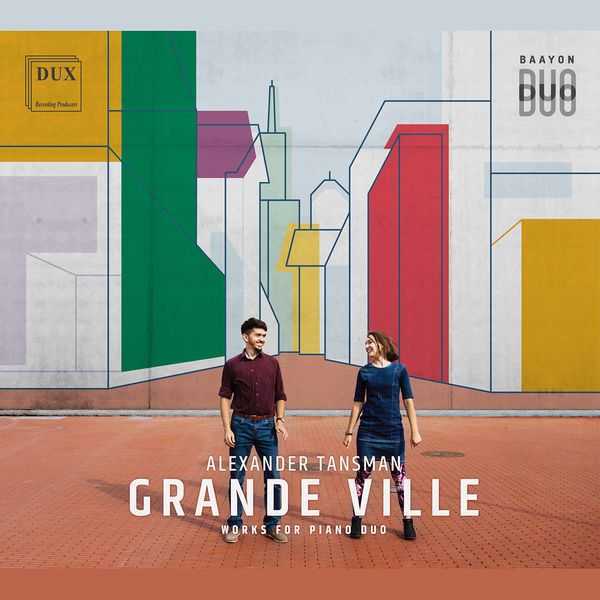
Composer: Alexandre Tansman
Performer: Baayon Duo, Dorota Motyczyńska, Paweł Motyczyński
Format: FLAC (tracks)
Label: Dux
Catalogue: DUX1842
Release: 2022
Size: 212 MB
Recovery: +3%
Scan: yes
01. La Danse de la Sorcière
La grande ville
02. I. La rue
03. II. Cité ouvrière
04. III. Dancing
Sonata for 2 Pianos
05. I. Andante sostenuto
06. II. Adagio
07. III. Molto vivace
08 .IV. Moderato
Serenade No. 3
09. I. Arioso
10. II. Scherzino
11. III. Notturno
12. IV. Fuga
13. Fantaisie sur des valses de Johann Strauss
An agnostic Jew, a descendant of rabbis, brought up in a lay environment. A Jewish composer in Poland, a Polish composer in France, in America a refugee mingling with the elite. Among his concert tours, he visited Hawai, Japan, China, the Philippines, Indonesia, Ceylon, Bali, Greece, Egypt, and Israel. Greeted by Gandhi during his stay in Bombay; in Japan he was a guest of Emperor Hirohito. Grande Ville – a great city- became this composer’s destiny.
Tansman, an eternal wanderer, he would arrive in each new great city with a head full of music and leave with a suitcase full of manuscripts. His biography is as colorful and outstanding as his work. He was an extremely prolific composer. The list of his works is a book of over 100 pages, one fifth of which is chamber music. In 1937, Tansman married the outstanding pianist Colette Cras. Most of the composer’s pieces for two pianos and four hands were written with the intention of performing them in a duet with his wife. Tansman’s works, intended to be performed by the couple, are extremely diverse – displaying neoclassical lightness or the darkness of war experiences, including inspirations from the works of other composers, and entertainment music. Identified with the contemporary avant-garde, dubbed the first Polish neoclassical by his critics, he himself avoided labeling his own art. Faithful to tradition and open to modernity, he defied all categorizations.